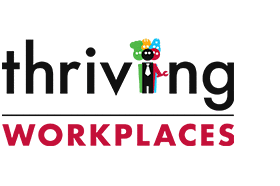
27 Nov SEASONAL AFFECTIVE DISORDER (SAD)
For many working people, late Autumn marks the time when we leave our homes for work in the dark, and by the time we get back in the evening it’s already night time. It seems like we’ve suddenly gone from long sunny days and never having to switch our headlights on, to only seeing natural light at the weekend. Despite this, most people look forward to Christmas and New Year’s celebrations, but for a group of the population shorter days signal the least wonderful time of the year. There are many steps that workplaces can take to support colleagues over this time which will contribute towards culture that is more open to the discussion of mental health.
WHAT IS SAD?
For 21% of the UK adult population, the change in the season correlates with “winter blues”; increased lethargy, sleeping and eating problems. For a smaller group, 8%, this feeling is more severe including symptoms of anxiety and depression, all of which prevent a person from functioning normally; this is Seasonal Affective Disorder (SAD).
The symptoms of SAD are similar to those of depression, some include:
- Low mood
- Lethargy
- Difficulty concentrating
- Overeating (particularly carbohydrates)
- Oversleeping
- Reduced sex drive
What makes SAD different to other types of depression it the correlation with time of year, there noticeable change between the seasons. The onset is usually in the Autumn and symptoms become most sever from December to February, gradually disappearing in the spring. This is usually observed for 2 or more years consecutively before a diagnosis is made.
WHAT CAUSES SAD?
Although it has not been scientifically proven, it is widely accepted that reduced sunlight exposure is the main cause of SAD. It could affect a person in a number of different ways; greater melatonin production making a person sleepier, less serotonin lowering mood and a disruption of circadian rhythms could all contribute towards the onset of symptoms. There are several treatment options that a doctor might recommend, including medication and different types of talking therapy. They may also recommend different types of self-help, many of which could also help someone who is experiencing “winter blues”.
TREATMENT OF SAD IN THE WORKPLACE
Exercise is often shown to often be as effective as medication is treating mild to moderate depression. A lunch or break time walk is a great idea at any time of year; it prevents afternoon slumps by preventing blood sugar spikes, aids digestions, boosts creativity and contributes towards 150 minutes of recommended physical activity per week. In the winter it is also valuable opportunity to get some sunlight exposure. If you don’t have one already, why not set up a lunch or break-time walking group?
Some people also believe that light therapy is a valuable in combatting the symptoms, there many different “SAD lights” on the market, the SAD Association has a list of recommended manufacturers including ones that are made to look like desk lights that could be used whilst at work. You could also try sitting close to windows and when possible leaving blinds open to get some natural light whilst you work.
As with all types of mental illness, it is important for an employer to create a culture where employees feel comfortable speaking about their mental health, at least 1 in 6 working people are currently experiencing symptoms of mental illness in the UK. Having a trained Mental Health First Aider is important for learning how to approach and assist colleagues displaying symptoms and those who ask for help. It also demonstrates that you take mental health and wellbeing in the workplace seriously, and view it on the same level as any other medical condition, encouraging people to seek help before they reach a crisis point. Thriving Workplaces offer fully funded MHFA 2-day training (usually £300 per person) to engaged workplaces, to find out more get in contact!
FIND OUT MORE
You can find out further information about SAD from these fantastic online sources:
https://www.nhs.uk/conditions/seasonal-affective-disorder-sad/#what-causes-sad
http://www.sada.org.uk/index_2.php
Whilst there is a lot of useful information available online, If you or someone you know is experiencing symptoms of mental illness that are preventing your normal function, it is important to seek professional guidance form a medical professional such as your GP.
If you want help with planning your next steps towards a healthier and happier workplace, then get in touch to become one of our partner organisations.


